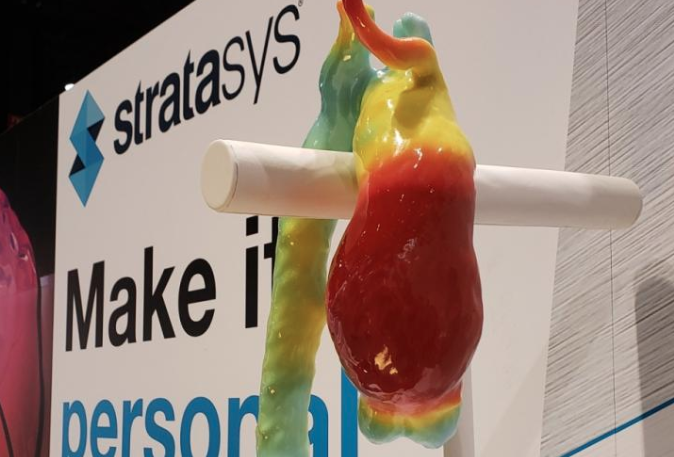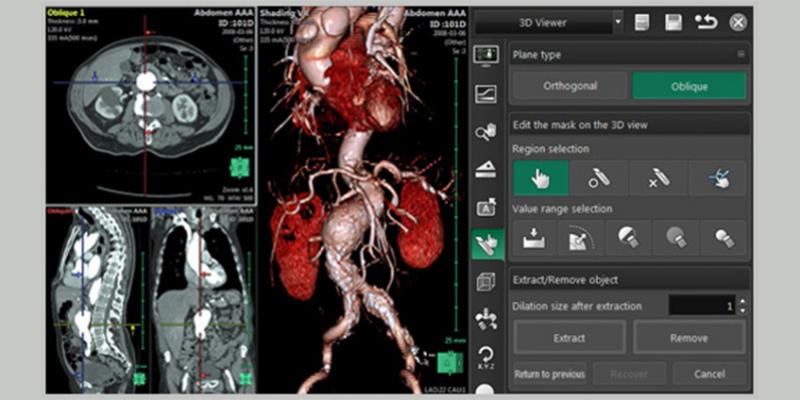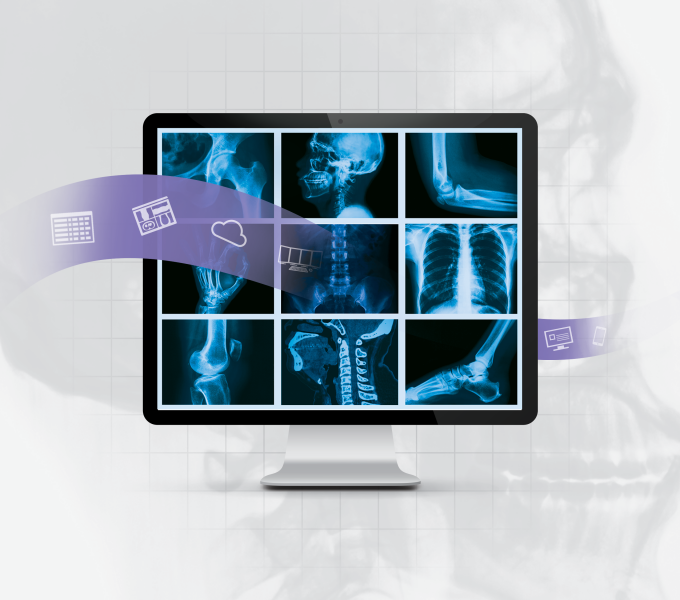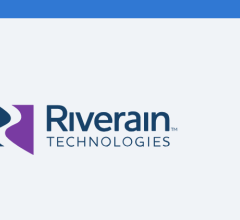
At RSNA 2018, Stratasys showed how 3-D printed models can help plan surgeries and assist in making complex diagnoses.
The central premise behind enterprise imaging (EI) is giving physicians the resources they need to provide the best care for their patients. While much of the focus in enterprise imaging is on the technological tools that are used, the tools themselves will not prove useful without a guiding strategy for how they will be implemented. Providers, then, must first develop a plan detailing the objectives they wish to achieve. From there, they can decide which tools will best help them achieve those objectives.
ITN Contributing Editor Greg Freiherr spoke with numerous enterprise imaging vendors at the 2018 Radiological Society of North America (RSNA) annual meeting for a feature video, available on itnTV, to find out how they are helping healthcare providers achieve that balance. You can view the video at https://bit.ly/2l4upMZ.
Developing a Roadmap
Developing an enterprise imaging strategy requires planning both to meet your immediate needs and your long-term goals. Change Healthcare focused on helping providers develop this two-pronged EI strategy at RSNA 2018. “There are many different ways you can solve these imaging problems. It has to first start with listening to craft a specific solution that meets their needs,” said Todd Johnson, executive director, enterprise portfolio transformation for Change Healthcare in the itnTV video.
Change crafts EI solutions through a mix of its own products and third-party software, using in-house expertise to make them work as one integrated solution. At RSNA 2018, the company highlighted its Universal Viewer and its Workflow Intelligence line of products.
Universal Viewer is, in many ways, the glue that holds the enterprise imaging network together. “We’re finding that a lot of our customers have common needs right now. While their implementation may be different, many of them are looking for an enterprise viewer that’s truly capable of going zero-footprint and meeting the clinician’s needs,” Johnson said in the itnTV video. He added that especially in an enterprise imaging network, images need to be easily accessible not just for radiologists but also for referring clinicians and everyone outside the department. Universal Viewer provides a single panel that shows past studies alongside the current study, with the key impressions from the current study highlighted to be easily found. “So literally within seconds a clinician can get an overview of a patient and be able to dive deeply into the key images for that specific patient,” Johnson told Freiherr.
Streamlined workflows are also key to a strong enterprise imaging strategy, and these can differ between hospitals or even between departments. Change Healthcare’s Workflow Intelligence product line provides a customizable rules engine to help orchestrate a common worklist that can also be specific to each clinical setting.
Bringing in Data From Across the Enterprise
Once a strategy is in place, only then can the ingestion of data from across the enterprise begin. Fujifilm highlighted several pieces of its Synapse platform in the itnTV video that bind the pieces of the enterprise imaging strategy together, from diagnostic imaging to treatment planning and delivery.
“The main driving force that we have is to provide the best care possible, the best technologies possible — whether it’s improving diagnostic image quality or reducing dose or having the datasets available across the enterprise to our clinicians,” said Johann Fernando, Ph.D., chief operating officer, Fujifilm Medical Systems USA.
Elements of the Synapse platform highlighted in the itnTV video include:
• Synapse VNA (vendor neutral archive);
• Synapse PACS (picture archiving and communication system);
• Synapse RIS (radiology information system); and
• Synapse Cardiovascular
“All of the data that is generated across the enterprise can be brought in and have it available to our radiologists and physicians from using our healthcare informatics platform,” Fernando told Freiherr.
Balancing Patient Care and Efficiency
The ultimate goal of enterprise imaging is to deliver better care to patients while increasing operational efficiency. Strategy and technology should work together to help physicians work smarter, not harder. “That’s very important to the time of care that I’m able to render for the patient, which ultimately we hope is going to improve outcomes,” said Kim Garriott, principal consultant at Logicalis Healthcare Solutions. “The faster we can determine the appropriate care path, the faster that patient’s going to be able to be on the right path,” she told Freiherr.
Konica Minolta Healthcare Americas demonstrated how to achieve this double aim at RSNA 2018 through its Exa healthcare information technology (IT) platform. “An image is no longer just a picture. The image is the insight that comes with the data that’s in that digital image,” said David Widmann, president and CEO of Konica Minolta Healthcare Americas in the itnTV video. The company introduced several new features to the platform just before RSNA 2018, including:
• Exa Voice Recognition for a more customized and user-based transcription experience;
• Exa Chat that facilitates secure communication one-on-one or across an entire department;
• Exa Peer Review to quickly share and reference specific patients, studies, approved reports and more;
• Exa Patient Kiosk, a self-service tool that lets patients easily check in for appointments, update information, and complete and sign electronic forms; and
• An improved Study Form Template.
Widmann told ITN that Exa also has an artificial intelligence (AI) algorithm that sits on top of the platform to help solve workflow problems as
they arise.
Enhancing Communication Through 3-D Printing
At RSNA 2018, Stratasys demonstrated how 3-D printing anatomical models from medical imaging scans can bridge the gap between radiology and the rest of the enterprise.
“Being able to hold a patient’s anatomy in your hand — to evaluate it, rotate it, to look at different relationships between different structures very clearly and see them in a three-dimensional space, rather than trying to recreate that three-dimensional space in your mind using two-dimensional images — it accelerates and improves the communication,” said Michael Gaisford, director of healthcare solutions for Stratasys, in the itnTV video. “If we say a picture is worth a thousand words, then a three-dimensional model is worth a million words.”
Monitoring Performance Through Analytics
Having access to an entire hospital or health system’s worth of data provides excellent opportunities for coordinated care — if you can ingest and make sense of all of that data. In today’s data-rich healthcare environment, analytics software is an essential tool for improving performance of both technology and people.
At RSNA 2018, GE Healthcare launched a new cloud-based application that helps assess the operating dynamics of its existing vendor-neutral archive (VNA), Centricity Central Archive. The Centricity Central Archive Analytics app is designed so users can get the most out of their existing information technology (IT) resources across the enterprise, and in turn achieve the best clinical results for their patients.
“It’s helping to drive the three key points that healthcare systems are concerned about today: their access to the data, their understanding of the data and how they can improve on their processes across the healthcare system,” said Aaron Hillman, global product marketing for GE Healthcare Digital in the itnTV video.
Philips Healthcare also focused on analytics as an enterprise imaging tool to improve workflow at RSNA 2018. The company bills its PerformanceBridge software as a way to drive financial and clinical efficiencies through real-time analytics, connecting physicians across
the network.
“PerformanceBridge and all the analytics that come with it is something we can deploy now,” said Julie Viola, senior field marketing manager, in the itnTV video. “It’s something we can look at now, and it’s something that can help our customers make decisions on what’s happening right now and make improvements.”
Strategy Drives Technology
Though there are countless technology tools available for providers to jumpstart their enterprise imaging strategy, they cannot make the former more important than the latter. Technology does enable clinical solutions and increased efficiency, but people make technologies work.
“We want to help them work smarter and improve our outcomes by having an entire continuum of care on those decisions that are being based on all that data they’re collecting,” Garriott told Freiherr. The selection and implementation of technology, therefore, should be planned so that whatever is put in place assists physicians and ultimately benefits their patients.
Related content:
RSNA Technology Report 2017: Enterprise Imaging
VIDEO: Building An Effective Enterprise Imaging Strategy
Five Steps for Better Diagnostic Image Management
VIDEO: Enterprise Imaging and the Digital Imaging Adoption Model
Enterprise Imaging to Account for 27 Percent of Imaging Market
VIDEO: Defining Enterprise Imaging — The HIMSS-SIIM Enterprise Imaging Workgroup




 May 21, 2025
May 21, 2025 








